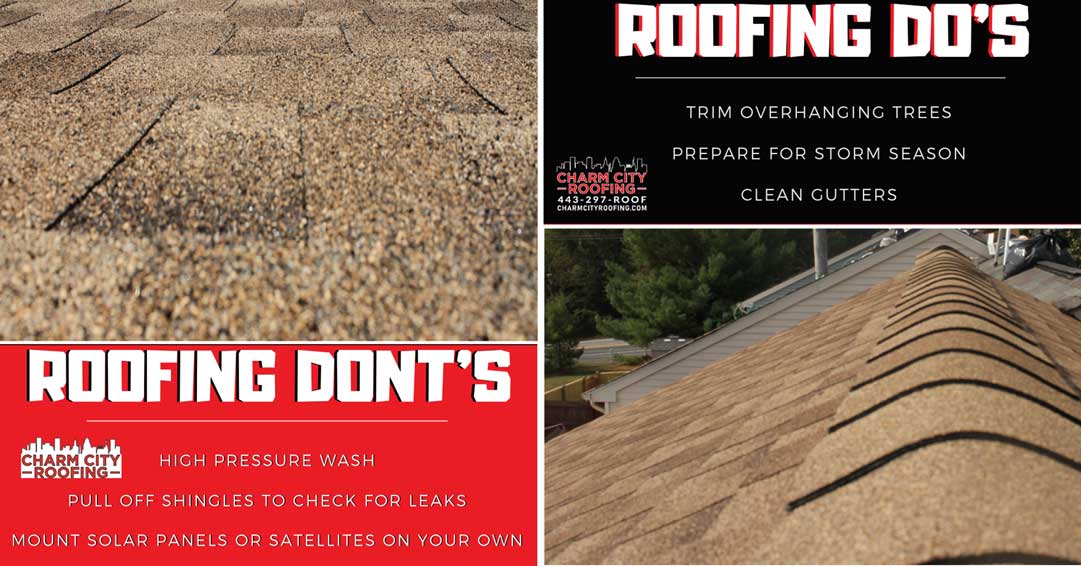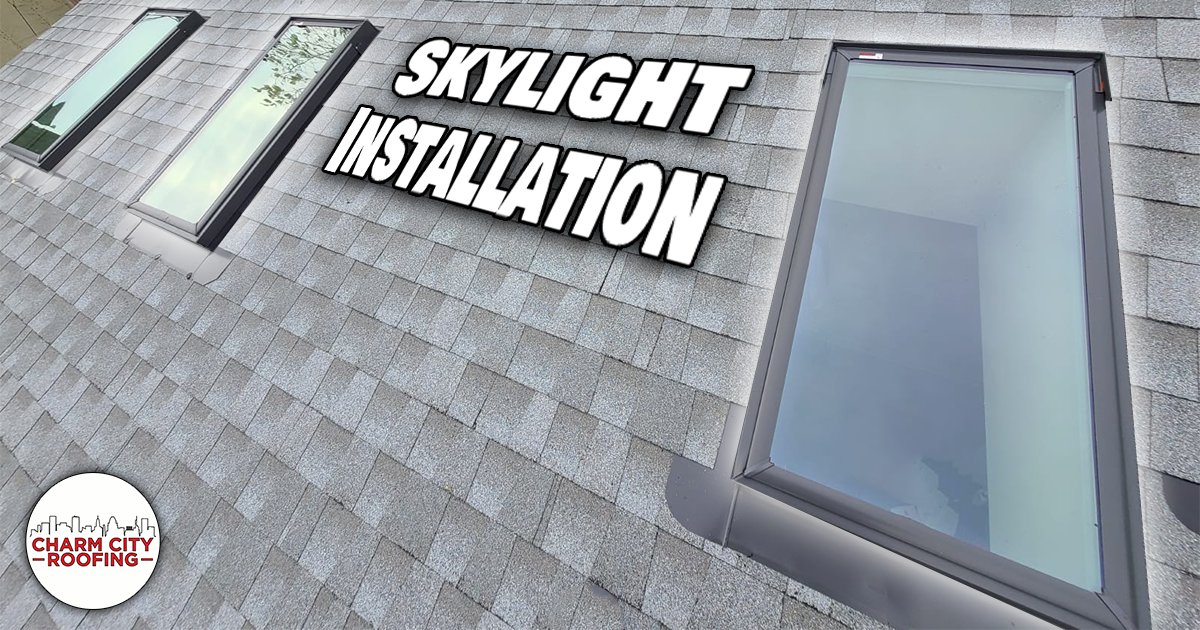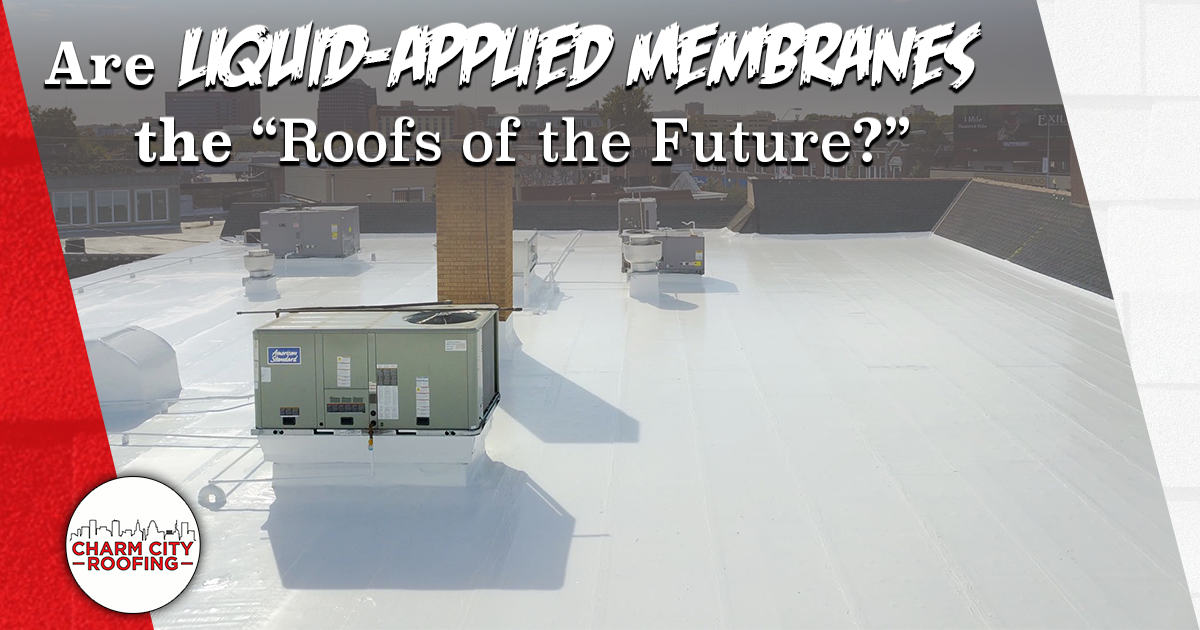
Liquid Applied Membrane – The Future of Roofing Materials?
Liquid Applied Membrane Roofing, A Modern Twist on Coated Roofing
Liquid applied membrane roofing materials are some of the quickest, strongest, and most cost-effective roofing technologies on the market.
For as long as there have been people, there have been roofs over our heads. And there’s always been a push for making them better. From the invention of thatch thousands of years ago, to the clay tiles of just a few centuries past, right up to modern asphalt roofing, humans have been constantly refining our roofing technology. All this with a single goal in mind: to keep the home clean, safe, and above all else, dry. So it’s a bit ironic that the future of roofing is… liquid.
In the past few decades, the invention and proliferation of polymer-based products has revolutionized every aspect of our lives. Synthetic polymers (a fancy word for what are basically a family of plastics) are incredibly strong, lightweight and flexible. In the last half century they have become indispensable in our day-to-day lives. Everything from the parts in your car to the material in your pants exist today because of polymer technology. The roofing industry is no exception to this rule; liquid applied membrane, or LAM for short, is our polymer revolution.
Why is it so awesome? With LAM, we can make roofs that can better withstand UV radiation, save on energy costs, vastly extend roof life, and help prevent fires, all while being extraordinarily cost-effective. And it all goes on with a paint roller!
What Exactly is a Liquid Applied Membrane?
Before learning about all LAM has to offer, we should lay some groundwork. A roof’s “substrate” is a term for the structural element of the roof itself. Think of a substrate as the studs in your walls; a frame for other vital elements to rest upon and adhere to. On the substrate, insulation layers regulate the building’s temperature. Vapor control layers fight the effects of condensation. And the membrane (the most relevant layer for our purposes) offers the primary defense against the elements. On flat roofs, a membrane is typically made of rubber, asphalt, or an asphalt-based material known as modified bitumen.
LAM is the latest addition to this list of housetop defenders. While asphaltic and rubber-based membranes are applied by partially melting them with a butane/propane torch, LAM goes on in a liquid form using either a specialized sprayer or roller. It’s as easy as watering a garden, or painting a wall. In just seconds, the curing process is well under way. This application method creates none of the hazardous fumes of hot applying asphalt and takes a fraction of the time. In the right weather, it’s possible to coat thousands of feet of rooftop in a single day using LAM. Once it’s cured it can last decades— as long as most asphaltic roofs. Nationally recognized manufacturers like GAF offer several types of Liquid Applied Membrane roofing products for various situations.
It’s also naturally thorough. The liquid application fills any cracks and voids with a seamless waterproof layer that molds perfectly to the shape of the roof. This can be a huge boon for flat roofs, where proper planing is essential. On top of that, liquid membrane slows the spread of fire, allows water vapor to pass through to prevent blistering, and offers tremendous versatility. It even works as a solution for waterproofing walls and basements!
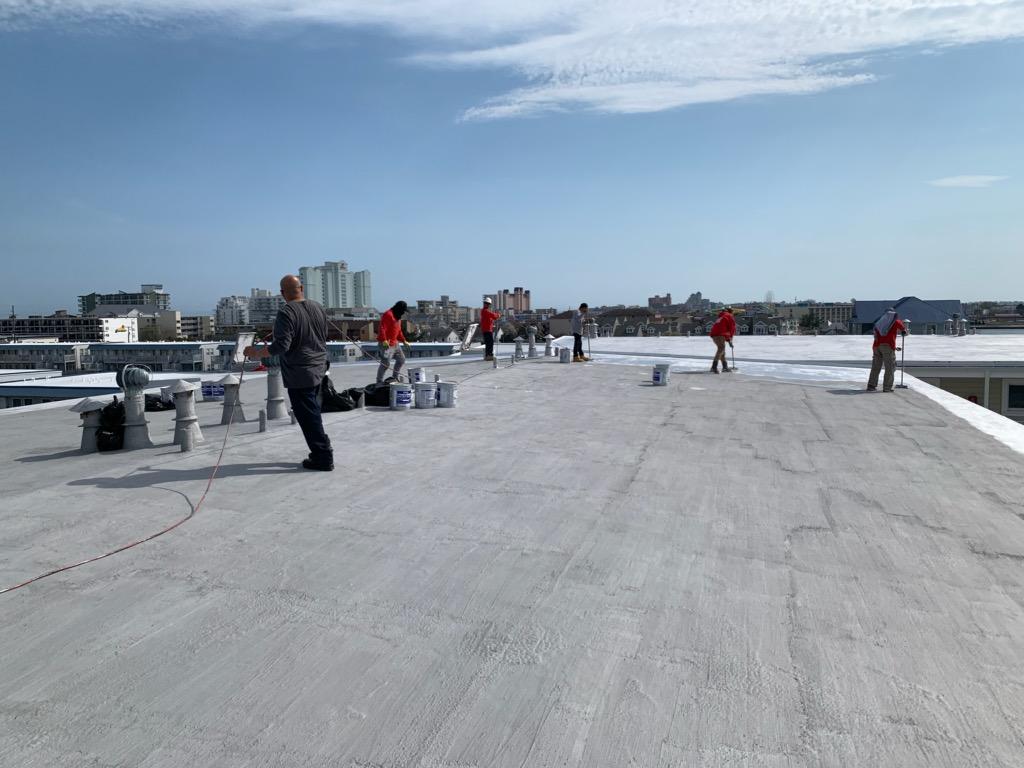
Charm City Roofing rolls on L.A.M Roofing onto a commercial building in Ocean City, MD
What Else Can Polymer Technology Do?
Polymer tech is very exciting for new roof constructions. Being able to lay fast, versatile, weather-resistant membranes in liquid form is game-changing. However, what about individuals or businesses who want to take advantage of this technology without replacing the roof they have?
Say no more— the same polymers used in LAM roofing can also be used to coat over existing roofs. LAM”s are coated over existing roof materials to seal leaks and provide extra protection. Asphalt, bitumen, and even metal roofs can reap massive benefits from a coat of liquid applied roofing. A coating will fill cracks or seams that may be starting to leak, and prevent others before they even start. Roof coating produces far less noise and debris than a traditional roof replacement. Additionally, it’s just as fast and easy as membrane application.
On top of everything, a coating will cool your roof down. Like, a lot. Under the heat of the sun, it’s common for asphalt roofs to reach fifty (!) degrees above the ambient temperature. In Baltimore, MD, where it climbs above ninety degrees in the summer, this means your shingles or blacktop roofs can literally cook eggs. Extreme heat softens asphalt and makes it susceptible to damage.
While asphalt and sheet metal absorb the heat, liquid coating is quite reflective. Under a coat of roofing polymer, roof materials remain much cooler and avoid UV damage. Coated roofs can remain tens of degrees cooler than their uncoated counterparts, which means the underlying layers remain solid. As a bonus, it also improves your home’s energy efficiency, which means you save on your heating and cooling bills.
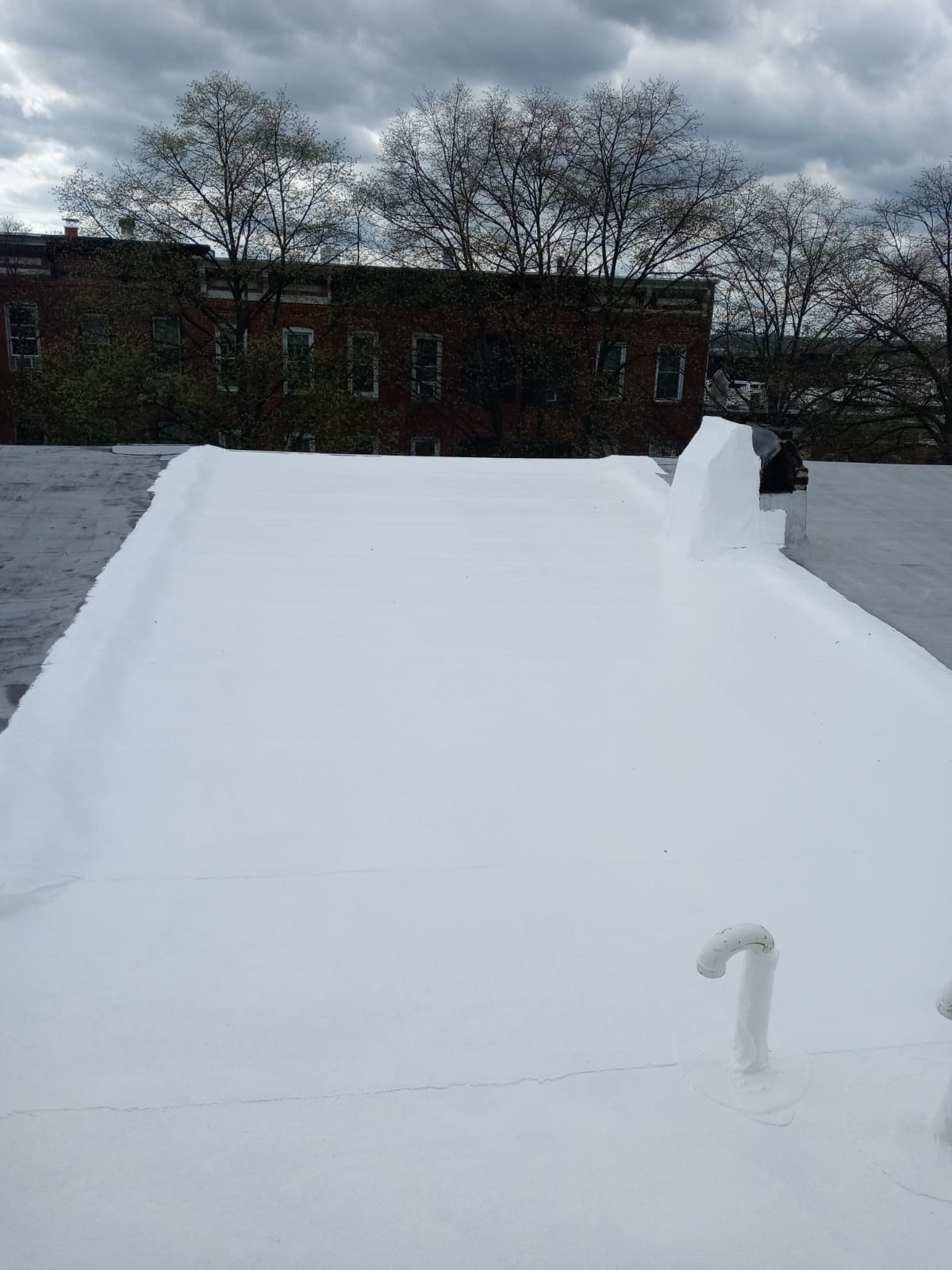
Silicone Coated Flat Roof in Baltimore
How Does A Roof Coat Look?
To top it all off, coated roofs look fantastic. A fresh roof coating can make an old, stained roof shine with like-new luster without any of the hassle of a full replacement. No fume-producing torches, no expensive re-roofing equipment, and no tear-off debris to haul away after.
The Bottom Line
Whether you’re looking for a top-of-the-line membrane for your new roof or simply seeking to rejuvenate and protect an old one, LAM and liquid polymers offer a host of advantages over other materials at a fraction of the cost. Given the benefits, it’s no surprise that LAM usage is on the rise nationwide.
Author: Wilden McIntosh-Round


